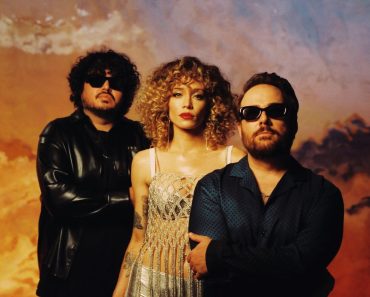
Graham Spicer sees 3 more works at the VISAVÌ Gorizia Dance Festival with Greek National Opera Ballet, performers from Africa, and a stand-up choreographer from Slovenia.
| Title | Bambu | Wetwear | Golden Age |
| Company | VISAVÌ Gorizia Dance Festival |
| Venue | Kulturni Dom – Teatro Verdi, Gorizia |
| Date | 17-18 October 2025 |
| Reviewer | Graham Spicer |
“Blessed is he who expects nothing, for he shall never be disappointed,” wrote Alexander Pope, 300 years ago. Not the best advice for a critic, but how true. High expectations for Greek National Opera Ballet’s Golden Age left me feeling short-changed, while zero expectations for Bambu put a spring in my step.
“Bambu is a project that aims to develop cultural relations with Africa based on genuine and concrete mutual respect.”
The producer of this programme of African contemporary dance is Roberto Castello, the founder of ALDES, a 30-year-old non-profit association, and in a pre-show announcement, the audience was urged to bury its preconceptions and look at the dance for its qualities, without ‘pity’, and reminding us of the strong contemporary arts movement in many countries in the African continent.
Madagascan dancer Julie Iarisoa performed her own work, Un voyage autour de mon nombril (A Journey Around My Navel), which begins with her in a pool of light surrounded by hundreds of paper boats. It’s a piece about the difficulties faced by Madagascan citizens when travelling, and in the spoken introduction to the evening it was pointed out that the difficulties in organising this tour included complicated visa red tape. Iarisoa says, “If it is difficult for us to travel from one country or city to another, let us take this opportunity to travel within ourselves.” The piece was quite static, in fact, relying on contrasting soft and strong arm movements.
Strong too was the piece Chute Perpetuelle (Perpetual Fall), choreographed and performed by Aziz Zoundi who comes from Burkina Faso. With a family opposed to dance, Zoundi was supported by an aunt, “a pillar of strength and hope throughout his training”. This powerful and extreme piece has Zoundi dropping and throwing himself repeatedly to the ground, and hitting his own body with force, alternating with moments of stillness. The piece was created as a reaction to the death of his aunt.
Naka tša go rwešwa was something else! The title translates as “horns for wearing”, coming from the proverb “counterfeit horns cannot stick permanently on a different head”. Yes, those horns will one day fall, and the deception will be revealed. Humprey Maleka from South Africa – again both choreographer and performer – filled the stage with toys, maps, books, binoculars, and a savoury tart that was shared with the audience after the performance… He spoke in English about how Africans were given names by the various nations that had ‘claimed’ parts of Africa, and so he gave some African names written on cards to members of the audience so they too could substitute their given name. Flags of colonising nations were brought onstage, then Maleka changed into a soldier’s uniform and marched around the auditorium with a flag that was larger than all the rest, that of the USA. It was zany, thought-provoking, though more of a lecture than a performance.
Jan Rozman’s artistic practice “explores extended bodies, the semiotics of materials and textures, gaps, errors and confusion, ecology, imagination, science fiction, and humour”. Hmm. His hour-long work Mokra Oprema (Wetwear) maintained interest with its constant contrasting changes, but wow, was this odd. The Slovenian performer has a stand-up comedian’s mike downstage centre throughout, and he appears with various bad wigs in front of it. He speaks good English and tried to encourage a largely empty theatre to get involved in his show – to clap, reply to his questions, and laugh – which many did through politeness, but something definitely got lost in translation. It was not funny, though a couple (maybe from Slovenia or his parents/colleagues/friends?) screeched with laughter, so obviously, we just didn’t ‘get it’.
Rozman worked hard – filming himself live with a smartphone and laptop, falling into a pool of water, talking almost continuously – all under showy lighting, lasers and projections. To little effect. After the show, he arrived in the auditorium in a robe and towel, but the few remaining members of the audience started heading rapidly towards the exits, leaving him with the courteous organisers of the VISAVÌ festival, who had no choice but to stay.
Greek National Opera Ballet’s Golden Age was presented in Gorizia’s beautiful Teatro Verdi. Konstantinos Rigos’s rather camp and hedonistic piece had its premiere in Belgrade in April 2025 and is the latest of several works he has created for GNO Ballet since he took over as its director in 2018. The sixteen dancers were excellent, and the production values were high. But…
Rigos has thrown in everything contained in his choreographers’ handbook. An overwhelming mix of music (from Bizet to Greek songs to jazz, rock, pop and electronic dance music); smoke and dazzling lights; a huge sculpture from the flies that vomits an avalanche of golden confetti; wildly exotic costumes; a man-on-man ‘kiss’ duet; a woman in a red PCV dress who becomes the flames of the Statue of Liberty’s torch; a man stapled by his clothes onto a board pushed Christ-like into a vertical position; fluorescent costume elements glowing under ultraviolet light; a male nude during the closing moments… and in the midst of all this excess comes the most beautiful, touching pas de deux with the dancers in simple skin-coloured Lycra, using classical positions (and stretched feet).
And maybe that was the point – purity vs corruption; purpose and connection vs deafening music and blinding lights with the company dancing in parallel during the thumping finale, without any eye contact. At one point, they sing the Eagles’ 1970s hit ‘Hotel California’, with the line, “Some dance to remember, Some dance to forget”. Funnily, my take on this piece was that it was criticising the lust for sensory overload, with pointless extravagances numbing the mind. Yet the programme note says, “Golden Age aspires to remind us that, since we cannot escape who we are, we ought to continue dancing to affirm our existence”. So Golden Age’s club-like electronic dance music ending is intended as a celebration, and is not holding up a mirror to mankind running traumatised towards the abyss.
Give me the touching pas de deux anytime, yes with its highs and lows, its pushes and pulls, but with human touch, eye contact and heart.













